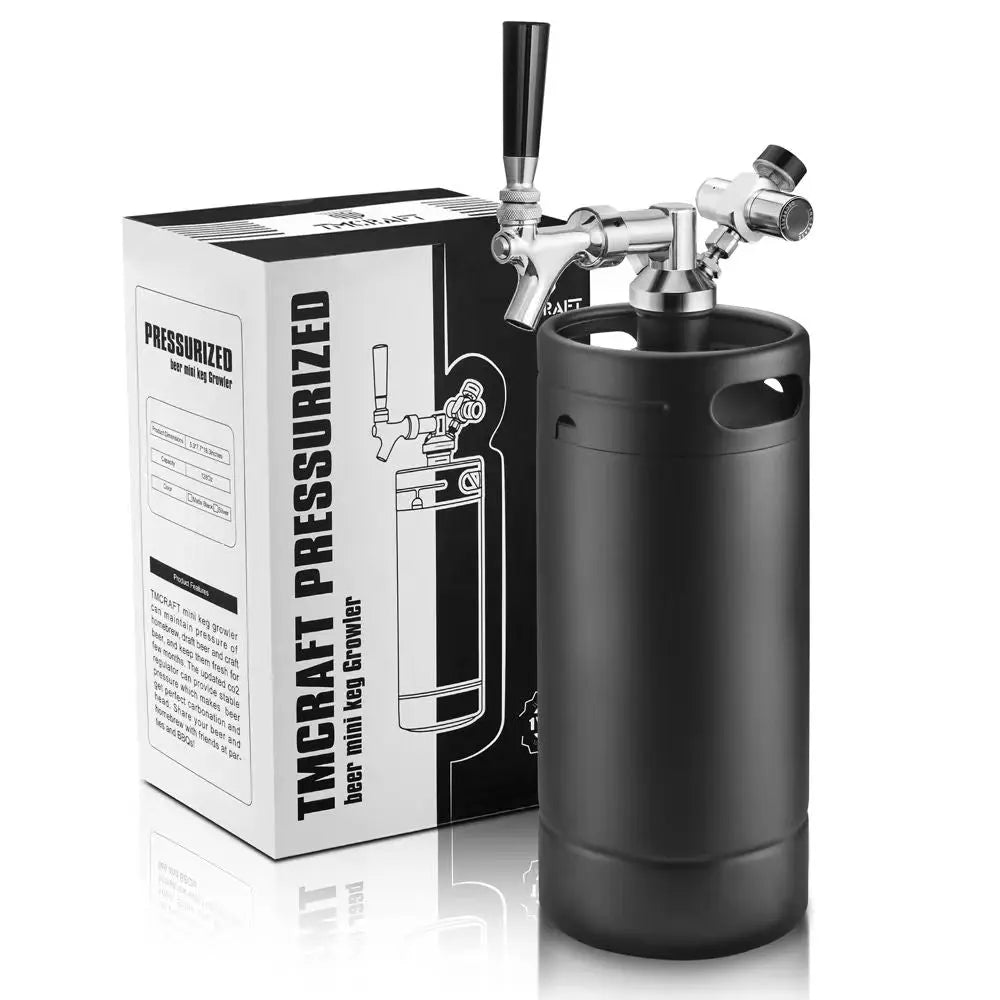-
TMCRAFT 1.6 Gallon Mini Corny Keg
Regular price $89.99 USDRegular priceUnit price / per -
TMCRAFT 2.6 Gallon Mini Corny Keg
Regular price $107.99 USDRegular priceUnit price / per
Collection: Corny Keg
What is difference between beer keg and corny keg?
A beer keg and a corny keg, also known as a Cornelius keg, are both used to store and dispense beverages, but they have several key differences, including their size, design, and typical uses. Here's a comparison of the two:
1. Size:
-
Beer Keg: Beer kegs, typically used in commercial settings like bars and restaurants, come in various sizes, with the most common sizes being 1/2 barrel (15.5 gallons), 1/4 barrel (7.75 gallons), and 1/6 barrel (5.16 gallons). These kegs are much larger and are designed to hold a substantial quantity of beer.
-
Corny Keg: A corny keg, also known as a Cornelius keg, is significantly smaller. The most common corny keg size used in homebrewing and smaller-scale applications is 5 gallons. However, corny kegs also come in 2.5-gallon and 3-gallon sizes. They are designed for more manageable volumes, making them suitable for homebrewing and small-scale storage and dispensing.
2. Design:
-
Beer Keg: Beer kegs, especially those used in commercial settings, are usually made of stainless steel. They have specific fittings, couplers, and connectors that are standardized but can vary depending on the region and type of beer (e.g., American Sankey, European Sankey, etc.).
-
Corny Keg: Corny kegs were originally designed for the soda industry and are often repurposed for homebrewing. They are typically made of stainless steel and feature a more straightforward and user-friendly design. They have two posts on the top for gas and liquid connections, which are compatible with ball-lock or pin-lock quick-disconnect fittings.
3. Typical Uses:
-
Beer Keg: Beer kegs are primarily used for storing and dispensing beer in commercial settings like bars, restaurants, and breweries. They are pressurized and can be connected to draft systems for efficient and high-volume beer service.
-
Corny Keg: Corny kegs are commonly used in homebrewing and by small-scale beverage producers. They are well-suited for storing and serving homebrewed beer, cider, wine, and other beverages. Corny kegs are easy to clean, maintain, and transport, making them a popular choice among homebrewers.
4. Pressure and Dispensing:
-
Beer Keg: Beer kegs are pressurized using CO2 or a gas blend, depending on the specific beer and brewery requirements. They are typically connected to a draft system that includes regulators and couplers for dispensing beer at the appropriate pressure.
-
Corny Keg: Corny kegs are also pressurized using CO2, but the pressure is typically lower than that used in commercial beer kegs. Homebrewers use portable CO2 systems or hand pumps to carbonate and dispense beer from corny kegs.
In summary, the primary differences between beer kegs and corny kegs are their size, design, typical uses, and the pressure and dispensing systems they require. Beer kegs are larger, designed for commercial use, and use specialized fittings, while corny kegs are smaller, often used in homebrewing, and have a more straightforward design.



